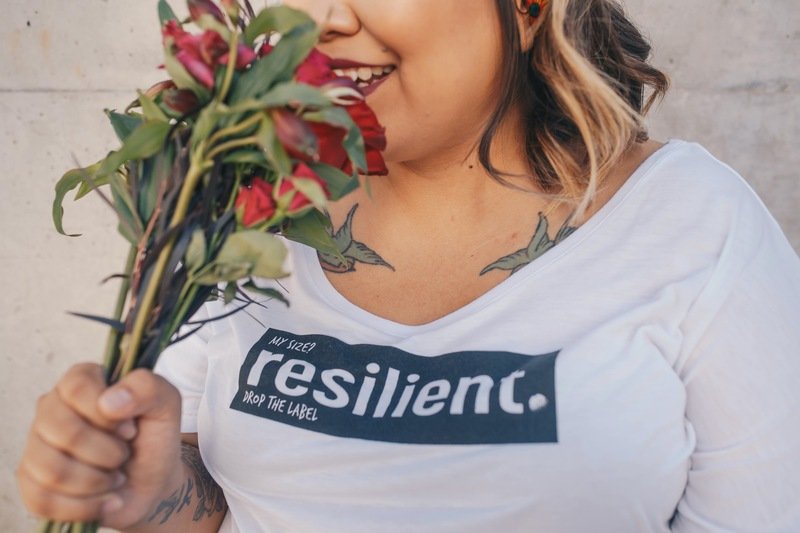We face challenges every day. It is part of the parcel we call life, and unfortunately, it is not something anyone can escape. We often have a hard time dealing with life’s stressors, but it doesn’t have to be this way.
How we respond to these challenges and stresses dictates whether our life is one of hardship or joy.
Our ability to bounce back from these challenges is essential if we don’t want to fall into bouts of stress and emotional turmoil. Luckily for us, resiliency, which refers to the ability to adapt well in the face of adversity, can be learned by anyone. You can learn it through consistent thoughts and actions.
To develop resilience, you’ll need to face challenges in your life. Only on your descent can you genuinely rise. Over time, you will learn how to power through these challenges and not be afraid of getting knocked down.
Maintaining resilience requires practice and meeting your challenges head-on.
Here are some strategies to help you build the confidence you need to get through the challenging times.
1. Stop ruminating over unfortunate events
There is a difference between feeling your emotions and thinking about what has already passed. Most of the time, we get wrapped up in our situation that we fail to know the difference. If this happens, we can fall into extremely unhealthy ways of dealing with our problems. Rumination is a silent mental health problem, with highly underestimated harmful effects.
In a nutshell, rumination is the focus of attention on one’s distress. So, when our friends try to ‘take our minds off it,’ they are doing so with good intentions. It’s to stop us from feeling sorry for ourselves and overthinking a situation we have no control over.
We mistakenly believe that continually thinking about our problems will help us find a resolution. But research has shown that rumination can cause a variety of negative consequences.
But let’s be honest, sometimes it feels good to wallow in our past.
Well, in actuality, we begin a cycle of thoughts where it becomes impossible to see the positive in anything.
If you get to this point, no amount of positive or wishful thinking can change your emotions.
So what can we do to stop rumination?
We need to b r e a k t h e p a t t e r n .
Ideally, you want to break the cycle by focusing on something that works a different part of the brain – the logical side.
Doing this helps you to be present in the moment and will slowly start to quiet the emotional side that is responsible for your rumination.
[Read this incredible yoga study that scientifically proves meditative yoga can reduce distress.]
The more you come back to this practice, the more effective it will be in helping you to stop ruminating and get clear-headed on what to do next.
2. Overcome your fear of failure
Many of us avoid failure at all costs. We don’t want to lose or be seen as a failure. But this paralyzing fear denies us the chance to become resilient to life’s many ‘setbacks.’
In real life, fear can look like perfectionism, low self-confidence, or a reluctance to try new things. Before we’ve even taken action, we’ve already self-sabotaged.
Fear stops us from moving forward, and we miss out on many opportunities and experiences because of it. It also robs us of any chance of bouncing back a more capable person than before.
We can’t control the outcome, but we can control our thoughts and emotions.
To overcome the fear of failure, we have to redefine what failure means to us. And it’s different for everyone. It’s in our best interest to create a positive and personal relationship with failure and work out how we can thrive instead.
And one way we can do that is…
3. View failure as an opportunity for growth, and not a paralyzing event.

Here is an exciting yet simple solution for you.
If you enter a situation seeing failure as a challenge (as in you accept that failure is possible) = you will thrive no matter the outcome.
If you see it as a threat (as in, you may lose) = your body will react as if it were so, rendering you defeated from the get-go.
I know which one I’d prefer.
When we approach life ready, open, and willing to see growth in our challenges and not a failure, that is what we will experience, despite the outcome.
At first, it’ll likely feel difficult to bypass your fears in this way. But over time, you’ll realize that this is the best way to learn new behaviors and grow as a person – by mentally creating the space for growth to take place, even when we think we aren’t ready or will fail.
The more we can willingly test our abilities, the more we learn about ourselves and the more resilient we become.
4. Build your confidence, self-esteem, and self-efficacy
There is only one way to build confidence and become more resilient. And it’s a mix of two things;
- Having the courage to move forward even before you feel confident in your abilities
- Accepting the result even when it’s undesirable
Notice how both of these take no consideration for our expectations or desires?
That’s because real inner confidence doesn’t always come from achieving what we want. It can come from knowing what we can endure. It’s a feedback loop. A loop that sees you go through the challenging periods and come out of it for the better.
It’s akin to the saying, ‘What doesn’t kill you makes you stronger.’
Except, you don’t have to wait until something tries to ‘kill you’ to be a resilient person.
Start building your confidence now.
There’s a misconception that to be confident, we must practice confidence. No. We really need to practice progress.
Why?
Progress is what happens when we continuously achieve our goals. And it doesn’t matter if these goals are big or small. As long as we are reaching them, then we are taking our confidence to a new level.
What this does on a grander level is build your self-efficacy, which essentially means to have a strong sense of trust in oneself. Our self-efficacy comes from our awareness of our abilities and the knowledge that we can deal with whatever situation is at hand.
Naturally, the more we engage and find success in these small activities, the more likely we’ll be to go for something that is higher risk.
The knowledge alone that you have overcome all previous struggles is enough to give you the confidence to take more risks. Our capacity expands to what we can handle and increases our ability to bounce back from it.
5. Accept the things you cannot change
Accepting is not the same as condoning or approving. It is instead a way to stop mindless resisting and struggling.
When our mind is clouded by ruminating over things we cannot change, we don’t take full advantage of all the things we CAN change. We disempower ourselves by leaving no room to make a difference in our lives.
We only ever have full control over our decisions and actions. And there is great empowerment that comes from genuinely knowing we can create change. So why are we so hell-bent on focusing on what we can’t?
In essence, it’s arguing with reality. You don’t need me to tell you how pointless that is.
Consider accepting things you cannot change as a redirection of focus – only see what you can change and acknowledge, but disregard the rest. If we want to be more resilient to life’s challenges, we have to have the ability to let go of what is no longer serving us.
You can certainly bet that these hardships are playing a big part in making us who we are. Whether we ruminate and dwell or let go and thrive, it’s us who decide the power our life’s events have over us.
Ultimately, building confidence and resilience is a choice. And it is connected to our attitude, perseverance, and perception of life.
There are many complexities in our experiences. To change our behaviors and how we interact with the world, we will need to pay close attention to our reactions and the state of our emotions. Remember, the journey to resiliency is also a practice that requires self-reflection and mindfulness in our actions.
As the saying goes, the only way out is by going through, and sometimes that may mean many times over. You can, however, always have the assurance that a healthier, more confident, and resilient version of you is waiting on the other side.
[et_bloom_inline optin_id=”optin_33″]
About The Author
Fai Fetwi has been exploring the depth of her being for most of her life. First, as an artist, then a teacher, and now a writer. She is intuitively and creatively directing an experience that allows her to be in her full expression, always.
Fai also works closely with others to help actualize their vision aesthetically and beautifully. She is the founder of Wildfai Creative, an agency specializing in web design, writing, and virtual assistance for conscious soulpreneurs.
You can usually find her in the middle of the jungle in an exotic location, self-reflecting, writing, and drinking excessive amounts of coffee.
You can read her reflections on being human at www.wildfai.com.












